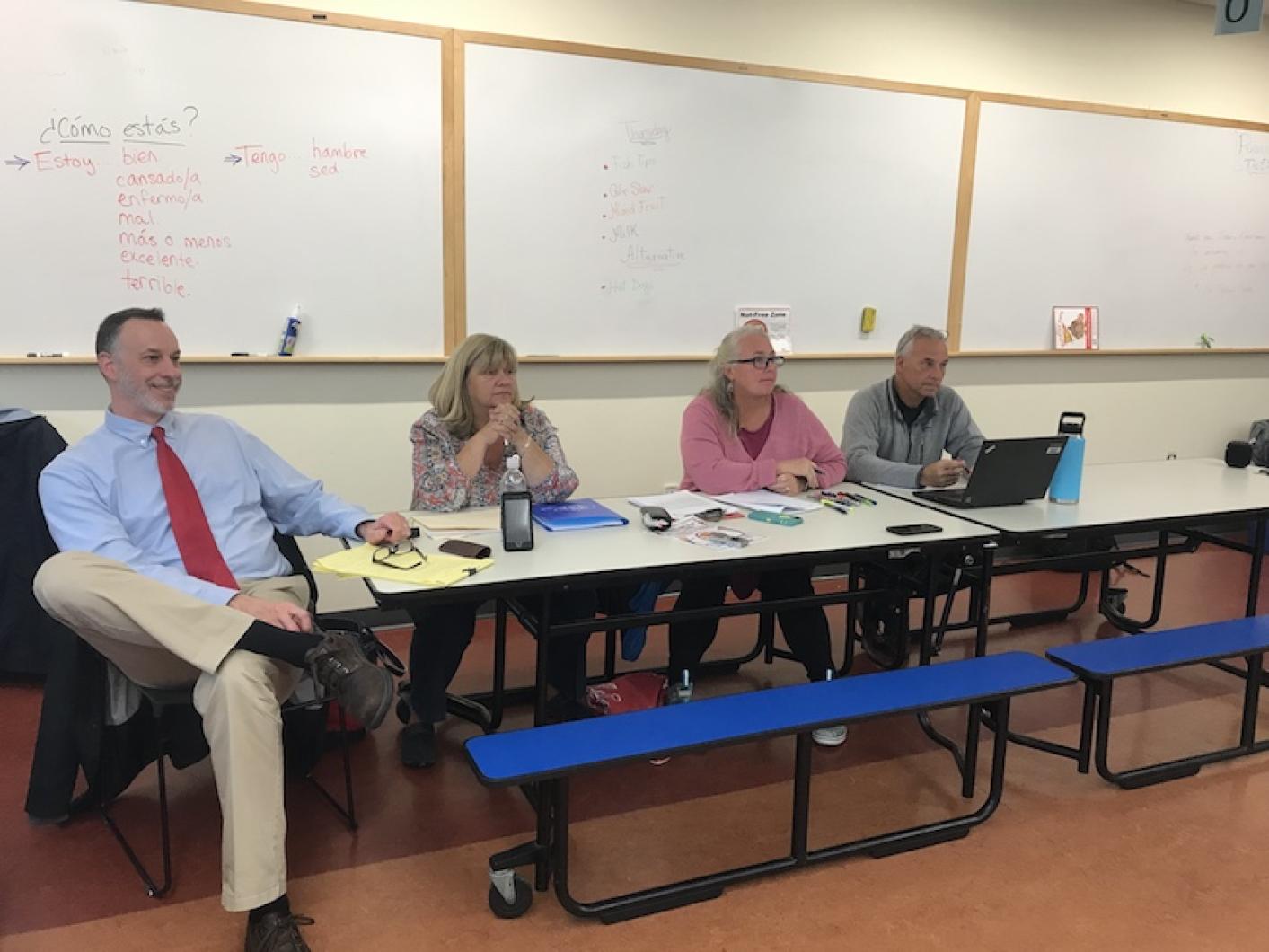A plan to install modular classrooms at the Tisbury School has been scrapped, less than a week before voters will be asked at a special town meeting to release nearly $2 million from Tisbury’s rainy-day fund for immediate repairs to the lead-contaminated school.
Vineyard schools superintendent Dr. Matthew D’Andrea told a meeting of the school committee Thursday that his plan for modular structures proved unrealistic, because it would pose an “extraordinary cost” and take up to six months, when his goal is to reunite the classes on one campus by January.
Currently students in grades five through eight are attending school in temporary space at the regional high school, while kindergarten through fourth-grade students are in a 1990s wing of the Tisbury School where there is no lead contamination.
In a letter to parents sent Thursday, Mr. D’Andrea said he wants to move ahead with lead-paint remediation while school is in session.
“Our goal at this time is to complete the work during the months of November and December, with the school being ready for students in January,” the superintendent said.
At the committee meeting Thursday afternoon, Mr. D’Andrea said he had not intended for lead paint work to take place while students were in the school.
“However, through conversations with the OPM [owner’s project manager Daedalus Projects Inc. of Boston], they have informed me of a very rigorous protocol used by lead safe certified contractors to seal off the work area and keep the building safe,” Mr. D’Andrea said.
He said he had consulted with the state Department of Public Health and the federal Environmental Protection Agency, both of which referred him to the state Department of Labor Standards’ lead safety department.
“They said it is a very safe process and that they will come out to the school during the work to inspect and make sure the work is being done correctly,” Mr. D’Andrea told the committee before a small audience of parents and teachers at the town emergency services building.
“We will also hire a full-time environmental hygienist who will be in the building at all times that work is going on,” he said,
That person’s job will include testing the air in the school for contaminants and monitoring the lead mitigation work to make sure it is being carried out properly, Mr. D’Andrea said.
He said an initial cost estimate came in at about $300,000 to remove all damaged and peeling paint and encapsulate undamaged lead-painted surfaces.
Asked by a parent whether the work would be done during the school day or after hours, Mr. D’Andrea said his office would seek bids for both options.
“I asked the Department of Labor Standards, and they said that as long as the work is done correctly there’s no need to do it on off hours,” he said. “It’s really a perception. But I’m willing, if that eases some concerns, to consider doing it off hours.”
Meanwhile, the town meeting set for Tuesday will go ahead with the request for $1.95 million because many costs remain unknown and there are “other expenses occurring around the current situation,” with the school community split between two campuses in different towns, Mr. D’Andrea said.
Tisbury town administrator Jay Grande concurred.
“We’re all clear that are some unknowns,” Mr. Grande told the school committee. “You need readily accessible cash to respond in a timely manner.”
Highlighting the tension that has threaded the school problems this fall, the meeting included a brief, scrappy exchange between committee member Janet Packer and Mr. Grande.
If voters approve the two articles on Tuesday — $1.5 million for the school building and $450,000 for unforeseen costs from relocating students and staff — Mr. D’Andrea said the school has obtained a state waiver to fast-track the public procurement process.
“It’s a Band-Aid,” he acknowledged, on the 90-year-old building that remains plagued with problems. But until the town finds funding for a complete renovation or a new school, “we’ve got to fix it,” Mr. D’Andrea said.
Tisbury School principal John Custer applauded the plan.
“This is a common sense approach to a situation and a problem that none of us wanted,” Mr. Custer said.
“It buys us time to get to the real, exciting building project that’s down the road.”







Comments
Comment policy »